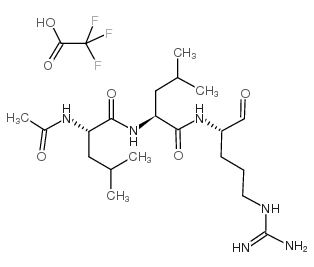| 结构式 | 名称/CAS号 | 全部文献 |
|---|---|---|
 |
腺苷-5'-三磷酸二钠盐水合物
CAS:34369-07-8 |
|
 |
亮肽素 三氟乙酸盐
CAS:147385-61-3 |
|
 |
抑肽酶
CAS:9087-70-1 |